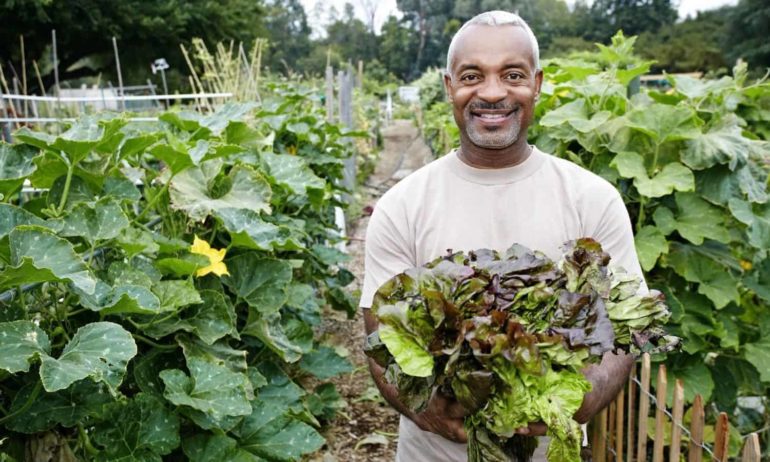This is a guest article by Olivier De Schutter and Steve Gliessman.
Using the wrong measure of success is certain to lead to the wrong solutions being adopted. In the economy at large, the narrow pursuit of GDP growth remains the primary tool used by policymakers to assess progress. This has motivated economic strategies that have delivered short-term GDP boosts, but in ways that have harmed the environment and disadvantaged many groups in society.
Food systems are no different. If the measures of progress are too narrow or too focused on the short term, the long-term outlook will suffer. In food systems, success is often reduced to increased yields, net outputs and net calorie availability on a global level. More is better and quantity trumps quality.
This allows many crucial factors to fall through the cracks. How resilient are yields in the face of environmental shocks and disease outbreaks? How much do they vary from year to year? Where and to whom is food made available, and with what nutrient content? How well do these systems preserve the natural resource base for the future? How much employment do they generate, and under what conditions? Do consumers know where their food comes from and how it was grown?
Though some proposals have been made to address this gap, there is no consensus yet on the metrics that can capture these factors comprehensively. But we do have emerging examples of food and agriculture systems that are capable of sustaining, stabilizing and improving yields, preserving the environment, providing decent employment and secure livelihoods, and delivering diverse, nutrient-rich foods – in the places where they are needed most.
Agroecology is an approach that seeks to address all these questions together by re-integrating modern agriculture with the ecosystems it relies on. Agroecology replaces external chemical inputs with alternative approaches that mimic natural processes and enhance beneficial biological interactions and synergies on the farm. For example, trees are reintroduced into farming landscape to provide shade for crops, sequester carbon, and provide habitat for beneficial organisms, while rice and fish in integrated systems regulate the conditions for each other to flourish.
These approaches deliver major benefits in terms of resource efficiency and GHG savings, while sparing soils and ecosystems from long-term degradation by chemical fertilizer and pesticides. And while agroecology shifts the focus away from narrow measures of productivity, it is nonetheless highly productive: the potential for sustaining and increasing outputs is very promising, especially in developing countries, and especially when the multiple outputs of integrated systems (e.g. rice and fish) are considered.
Agroecology therefore facilitates ecological intensification while ensuring that any production gains can be sustained into the future. Part of this sustainability comes from reducing the costs for farmers: reliance on local inputs and the recycling of waste as inputs significantly reduces the costs of production, making it a financially sustainable option for farmers who are risk-averse or who have poor access to credit.
These forms of agroecological transformation are already happening. But more must be done to bring examples to light, and to garner the political support that agroecology deserves and needs. That’s why the LIBERATION project is so crucial. And that’s why the International Panel of Experts on Sustainable Food Systems (IPES-Food) is working to gather a set of case studies on transitions to agroecology in different regions of the world.
We need examples in order to change the world we live in. The smoking bans now in place in offices, bars, and public spaces around the world only came after successful experiments in New York City and other pioneering localities. After Denmark successfully brought in a ban on transfats, other European countries followed suit, and the EU is now considering similar action.
The same thing can now happen with agroecology. Successful experiments at the farm, community, and regional levels can inspire and empower others. But agroecology is not a toolbox with one-size-fits all solutions. Rather, it offers an alternative set of values and approaches to govern food and farming systems – approaches that can be locally-adapted and regionally applied.
The case studies IPES-Food is gathering will help to document the ways that farmers and farming communities have put agroecological principles into practice in order to spark a change process. The stories behind these pioneering actions are crucial. How were the first steps taken? How did the local knowledge of farmers interact with formal science? How supportive was the political environment? How were the obstacles to change overcome? Did they manage to undertake the five levels of change that are crucial for agroecological transition, including the change in our beliefs and values about what kind of food systems we need?
As a new initiative, IPES-Food is committed to shifting the terms of debate on reforming food systems, so that power relations and political economy are at center stage. Telling these stories will help us to capture the process of transition, to understand the blockages that lock in current models, and to identify the entry points for unleashing change across food systems. The case studies will also bring to light what is important in food systems – beyond blunt measures of productivity.







